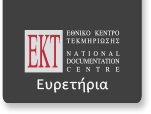Exploration of Maltese prehistoric temples through the application of multimedia technologies
Part of : Mediterranean archaeology & archaeometry : international journal ; Vol.5, No.2, 2005, pages 23-34
Issue:
Pages:
23-34
Section Title:
Articles
Author:
Abstract:
This paper focuses on the archaeology of the Maltese Megalithic temples and the application ofmultimedia techniques to create compelling cultural experiences. In 2001, the UNESCO Megalithictemple Mnajdra in southeast Malta, one of the oldest freestanding monuments in the world, suffereda severe vandalism attack that drew attention to the strong need to protect and conserve heritagemonuments. Mnajdra is classed by ICOMOS Malta as level 5 (showing intense signs of riskwithout possible reversibility). In light of the importance of material Megalithic artefacts and theincreased pressure of tourism, it is important to find creative solutions to physical visitation thatcontinue to provide meaningful experiences for visitors.This paper investigates how digital media and screen-based navigation can be utilised to provideengagement with Maltese prehistory. Rather than questions of preservation and conservation,issues of spatial navigation and end-user interaction are addressed. Using methodologies fromcomputer games, the paper addresses how the visitor might interact with Maltese Megalithic templeculture through the construction of scenarios that create cultural and social presence.Drawing on the work of Maltese archaeologists including Dr John D. Evans and Dr DavidTrump, the paper proposes that the role of archaeological integrity and research is central to thedesign of effective cultural heritage experiences. Describing visualisation and forms of user embodiment,the paper outlines the principles of spatial navigation for different social groups and sets ofcultural knowledge. This approach enables different communities of end-users, such as culturalhistorians, archaeologists and tourists, to engage in enhanced social interaction with cultural andheritage spaces.The approach taken in the paper can be summarised thus:• Develop new interactive context of Maltese prehistory by applying gameplay and associatedmultimedia methodology.• Identify the principles of spatial navigation for creating cultural and social presence.• Demonstrate how visualisation techniques can be developed for the exploration of templespaces.• Investigate the construction of metaphysical or symbolic ritual environments through abstractavatars, performance modes, sonic and spatial models.Such concerns are formative ones for the crossover between archaeological research and digitalmedia. New knowledge in this area contributes to further understanding of the procedures Malteseand international communities might use to construct new modes of engagement for Megalithiccultural heritage. This research is also applicable to the development of protocols for sharingMaltese heritage material across international archaeological communities, museums and commercial ventures.
Subject:
Subject (LC):
Keywords:
Navigation, Computer games, Spatial exploration, Aesthetics




